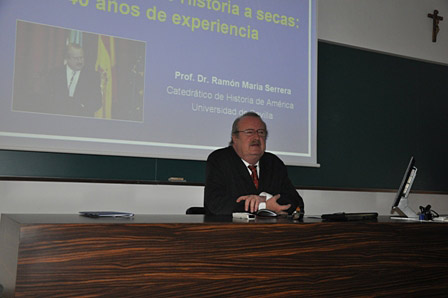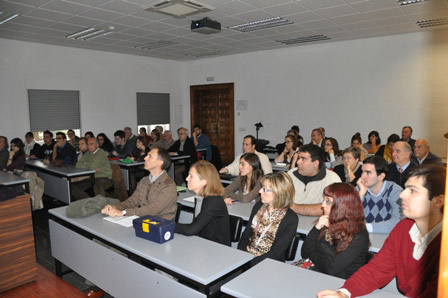November 11, 2010
The History of Art or just History: 40 years of experience
D. Ramón Serrera Contreras. University of Seville
The quantity and quality of the pictorial, sculptural and architectural creations produced by the Church in the Indies during the 17th century continues to amaze today. More than in its formal analysis, historians should focus on the consideration of this plastic production as a language and cultural expression of a multiethnic society that developed in the heart of a very precise political, economic and administrative Structures , marked by the sign of dependence on an external metropolitan power. Therefore, in order to study Colonial Art in depth, it is necessary to study the historical conditions in which it was born and developed.
In general terms, all Indian artistic production was conditioned by several factors that we do not hesitate to qualify as structural: the distance, measured in space and time, between Spain and its overseas provinces; the continentality and territorial immensity of the Indies; the profound regional differences in its geography; the diversity of cultural levels of the indigenous population on which the new colonial order was built; the greater or lesser aboriginal demographic concentration in the different areas of the continent; the heterogeneous management assistant and economic evolution that each kingdom experienced from the 16th century; and the disparate regional chronology in the processes of finding, conquest and occupation of the territory throughout the Modern Age. The result of all this was a progressive process of regionalization of styles, in which the creation of each zone depended on local materials, agricultural and mining resources, the rate of ethnic and cultural miscigenation of the population, the Degree of integration management assistant and its insertion in the network of maritime and land communications that allowed the reception of external influences. This is how the so-called regional schools were born, both in pictorial and sculptural and architectural production. And that is why today we speak of Quiteña, Cuzco, Arequipa, Bogota, Puebla, Mexico, etc. schools.
Does it call our attention that an Inca king appears as Gaspar in a canvas of the Adoration of the Magi in a rural parish of Juli, or that Saint Joseph is represented with clear indigenous features in a panel of the Cuzco school, or that in Cuzco hard basalt stone is used as material, in Arequipa the soft and white pomita stone, in Lima the quincha and in Mexico the chiluca and tezontle? Or that the Puebla school relaunches in the New World the Andalusian plaster tradition in interiors and the polychromatic Triana tilework in exteriors, or that the Mudejar coffered ceiling is the most used roof structure during the three centuries of the colonial period in the Andes as an adequate architectural prevention against the frequent seismic movements, or that Guatemala raises its temples with solid volumetry for the sake of the stability and solidity of the buildings? Because, as we have already expressed above when dealing with Creole speech, it is no longer only a matter of colonial plastic creation being expressed in a "language" different from that of the peninsula, but of each zone (Peru, Mexico, New Granada, Quito, the Antilles, Chile, etc.) beginning to reflect in this century of the XVII its own specific stylistic inflections within the double process described above of Creoleization and regionalization of artistic expression.
All this ended up giving birth in the Indies to an art that must be "explained" more by periods than by styles, timeless and even archaic due to the persistence of certain regional invariants; that combines, interweaving them, elements of diverse styles and origins; that adapts - "criollizes"- to the orographic and seismic conditioning factors of the territory; in which cultured and popular, official and unofficial contributions coexist; in which ornamentation (light, color, decorative complexity) predominates over spatial innovations; and, above all, which is at the service of the State's interests, both profane and spiritual.

The seminar of Professor Ramón Serrera took place at classroom 31 of Central Building of the University of Navarra.

